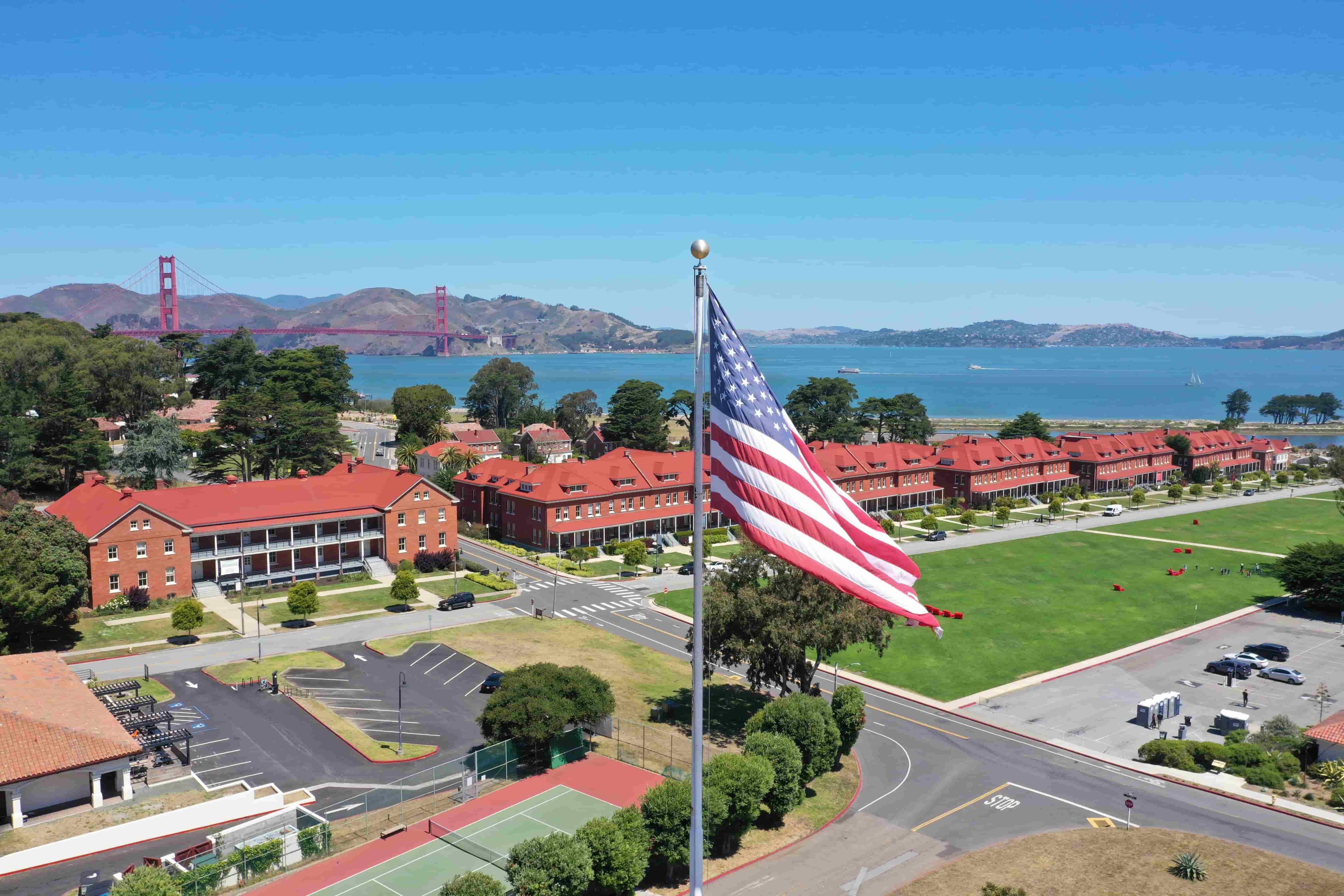Plant Thought to be Extinct Gets New Home in Presidio
Presidio of San Francisco (January 27, 2010) — A rare Franciscan Manzanita thought to be extinct in the wild for nearly 70 years has been transplanted to a new, protected location in the Presidio, the culmination of a three-month, multi-agency effort to save the plant after it was discovered along the Doyle Drive corridor by a biologist who happened to be driving by.
“It was an intense and remarkably collaborative effort by all the agencies involved,” says Mark Frey, an ecologist with the Presidio Trust. “A lot of people took a strong interest in saving this plant.”
With about ten tons of soil to move, transplanting the Manzanita was both a delicate and massive undertaking. Crews first dug a trench around the plant and encased the plant and its roots in burlap to keep it moist. Dozens of steel rods were placed under the plant and beams were attached to the rods. The plant was then lifted by crane onto a flatbed truck and driven to its new home, where a second crane lowered it into the ground.
Before the plant was moved, its fruits and seeds were collected and dozens of cuttings were harvested and distributed to a half-dozen nurseries and botanical gardens. Already some of those cuttings have begun to sprout roots. A large, sprawling shrub, the Manzanita also had several stems leaning on the ground that had begun to sprout roots. Some of those stems were also cut and taken to nurseries.
The multi-faceted conservation plan was the product of extraordinary cooperation among a number of different agencies including the Presidio Trust, the National Park Service, Caltrans, the California Department of Fish and Game and the United States Fish and Wildlife Service. The ultimate goal is to reintroduce the Manzanita into the wild and reestablish as diverse a population as possible in a variety of locations to help ensure the species’ survival.
“We have a chance to rewrite the last page of a million year old story and to keep this story alive,” says Dan Gluesenkamp, the passing biologist who discovered the plant. “It’s extremely exciting.”
Gluesenkamp, the director of habitat protection and restoration for Audubon Canyon Ranch, was driving home to San Francisco last October after giving a talk in Santa Rosa about, ironically, the importance of saving rare species and evolutionary lineages. From the car, he spotted the Manzanita out of the corner of his eye. It was such an improbable discovery that Gluesenkamp had to make a return trip through the area to get a more careful look.
Still in disbelief over his find, Gluesenkamp notified Presidio natural resource staff who were at the site within an hour working to identify and protect the plant — making sure it was not removed or harmed.
“It’s really an amazing success story,” says Gluesenkamp. “It was remarkable how quickly the people from the Trust responded. They didn’t put it on a ‘to do list’ or say ‘we’ll check and get back to you.’ They got right out there.”
“It’s an incredible find, like Christmas morning when you’re five,” says Frey. “For decades everyone has thought this plant was gone and the chance of finding it again was virtually non-existent. As part of our restoration efforts we scour that area all the time and yet there it was, right in the middle of the corridor.”
The Franciscan Manzanita was last seen in the city for which it was named in 1942, at the Laurel Hill cemetery, near what is now the USF campus. But for a limited number of plants growing in botanical gardens, the species was believed to have been lost to the wild when the cemetery was bulldozed to make way for commercial and residential development.
The discovery was a “huge surprise,” says Michael Chassie, a natural resources specialist with the National Park Service who helps monitor and manage rare plants in the Presidio, and who has studied the Franciscan Manzanita extensively. “Not only because it was known or thought to be extinct in the wild, but there was no previous record of the plant in the Presidio.”
“It’s a good reminder that these less developed parts of San Francisco are reservoirs of natural history,” says Frey.
To Gluesenkamp, it shows “there are a lot of treasures out there right under our eyes. That these things are really able to hang on and if we just look, all is not lost.”
The Presidio Trust was established by the United States Congress in 1996 to administer the Presidio of San Francisco, an urban national park located at the base of the Golden Gate Bridge. The areas overseen by the Trust include expansive open space and spectacular views, a 300-acre historic forest, and rare and endangered plants and wildlife. The park comprises nearly 6 million square feet of buildings, including 469 historic structures that contribute to the Presidio’s status as a National Historic Landmark District.
